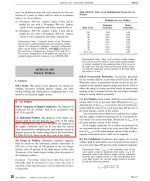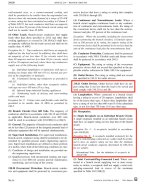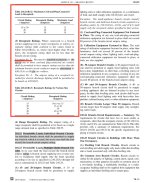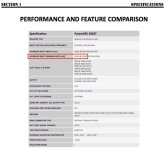Mark @ Everlast
Advertiser
No, there is no violation to have a 30 amp breaker on a 15/20 amp receptacle, if it is inrush current (for a duty cycle limited welder). The conductor size is based off the I1eff current, not the I1max
No, there is no violation to have a 30 amp breaker on a 15/20 amp receptacle, if it is inrush current (for a duty cycle limited welder). The conductor size is based off the I1eff current, not the I1max
No, there is no violation to have a 30 amp breaker on a 15/20 amp receptacle, if it is inrush current (for a duty cycle limited welder). The conductor size is based off the I1eff current, not the I1max




Cabin,
Our units go under the scrutiny of ETL for conformance to codes and safety. I think we are saying the same or similar things. I am definitely not an electrician, but I like using it to join metal. However, I do know, with 120V circuits, most people are not installing a circuit to operate it on, and it is already existing. It's a catch 22 really. All welder companies operate their 120V units over 20 amps, if the are indeed putting out the maximum 120V amperage advertised. Some companies still insist on using a "rated" amperage instead of stating separate inrush(I1max) and operating currents at max output (I1eff), I guess in an effort to skirt this issue, and put a low duty cycle on their unit at a lower rated output than the unit is capable of putting out. For example and 140A transformer MIG is typically rated at or around 20 amps at an output "rating" of 90A at 20% duty cycle. But they say it puts out 140A. And it still has a 15 amp plug and people report much higher duty cycles than rated:confused3: I had a electrician bawl me out the other day for not having a rated amperage and didn't understand the separate ratings. Well, that wasn't the first time and it is a constant issue with electricians not knowing anything about article 630 for 240V operation. Hardly ever get one involving a licensed electrician installing a 120V plug for the unit. When I do, I tell them to wire the plug for the inrush if they have any doubt, which would be a 30 amp 120V receptacle and rewire, or adapt the 240V plug. I always tell customers, (as recently as yesterday) to consult a local licensed electrician for their units. What customers end up doing is ultimately up to them. The manual tells them to, and I tell them to. Customers aren't always going to be happy with that and do get frustrated by my lack of giving advice on these things other than to talk with a qualified electrical person.
Hi Mark,
That was the intended point of my initial post, though I could have stated more clearly; the welder will work on a 15amp or 20amp convenience circuit if there aren't too many other concurrent loads. Since the circuit is existing who will enforce whether it is a technical violation of use? From a practical safety perspective, if the load gets too high the breaker should trip. And if hiring an electrician to install a proper, fully code-compliant circuit one might as well pay the nominal difference for a 240v circuit and reap the added benefit of improved performance.
Now that we've gotten all that out of the way :shocked:, when will the new 210st be available.